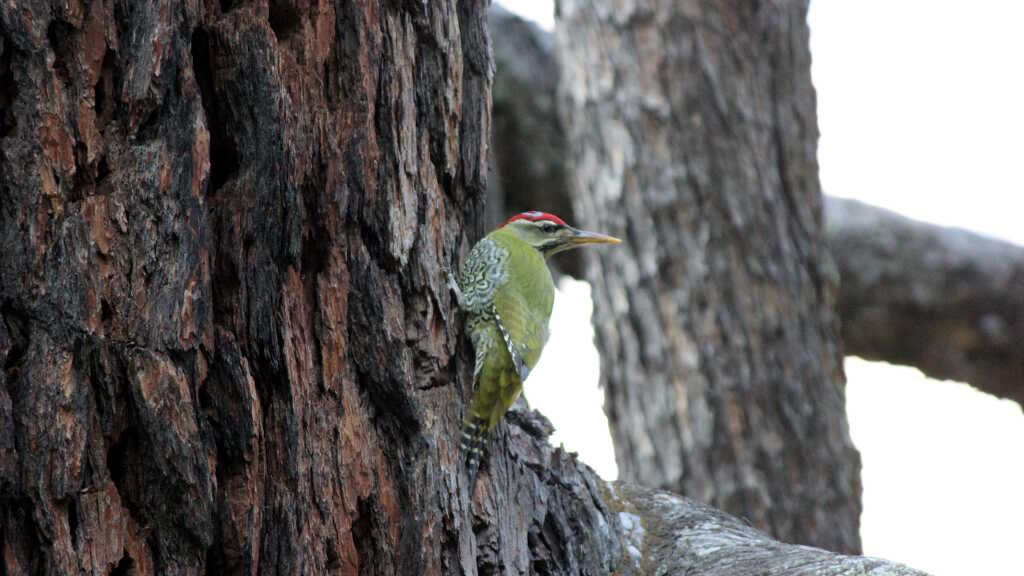
Picus squamatus (Scaly-bellied woodpecker)
The Scaly-bellied woodpecker (Picus squamatus) is one of the most striking woodpecker species found in the forested habitats of the Great Himalayan National Park (GHNP). Known for its vivid green plumage and intricately patterned underparts, this bird is a frequent sight in the park’s broadleaf and mixed forests, especially at elevations ranging from 1,500 to 3,000 meters.
Physical Characteristics
The Scaly-bellied woodpecker is a large woodpecker, measuring around 30–35 cm in length. It is easily recognized by its olive-green upperparts, pale green belly overlaid with dark scale-like markings, and a bold red crown (in males). The bill is strong and chisel-shaped, adapted perfectly for pecking into tree bark in search of insects and larvae.
Habitat and Distribution in GHNP
This woodpecker prefers moist deciduous and mixed forests, often in areas with mature trees and dense canopy cover. In the Great Himalayan National Park, it is commonly observed foraging on tree trunks and large branches, occasionally descending to the ground. The bird thrives in the relatively undisturbed forest zones of GHNP, which provide ample nesting and feeding opportunities.
Behavior and Ecology
A diurnal and solitary bird, the Scaly-bellied woodpecker is best known for its loud, resonant drumming and sharp calls that echo through the Himalayan woods. It primarily feeds on ants, termites, beetles, and other insects, using its long, sticky tongue to extract prey from deep crevices. Breeding typically occurs from March to June, during which both sexes excavate nest holes in tree trunks.
| Common name | Scaly- bellied Woodpecker |
| Scientific name | Picus squamatus |
| Family | Psittacidae |
| Description | It has scales on its belly and flanks. It is larger than the Streak- throated, with pale bill, reddish eye and prominent black eye-stripe and moustache—Un-streaked throat and upper breast (except juvenile) and a barred tail. A resident of Himalayas; it is found mainly in the forest, scrub and forest with large trees. |
Conservation Significance
Although the Scaly-bellied woodpecker is listed as a species of Least Concern by the IUCN, habitat degradation poses a threat in parts of its range. The protected forests of the Great Himalayan National Park offer a safe refuge for this species, underlining the importance of continued conservation efforts in the region.



